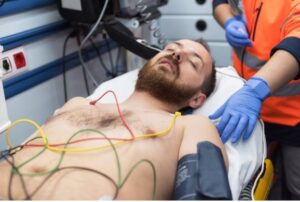In a world where emergencies can arise without warning, having the knowledge and skills to react effectively can make the difference between life and death. One such crucial skill is cardiopulmonary resuscitation or CPR. This lifesaving technique, when applied correctly and promptly, can significantly increase the survival chances of a person experiencing cardiac arrest. Understanding why to study CPR and recognising its importance is a vital step toward becoming a proactive member of our society. Here’s why.
The Critical Nature of Cardiac Arrests
Cardiac arrest occurs when the heart suddenly stops beating, leading to a cessation of blood flow to the brain and other vital organs. It can happen to anyone at any time, regardless of age or physical fitness. The immediate application of CPR has the potential to maintain vital blood flow to the heart and brain until professional medical help arrives. Learn what CPR stand for in medical terms.
Why Study Cardiopulmonary Resuscitation?
- Saving Lives
The most compelling reason to learn CPR is the ability to save lives. Studies have shown that if more people knew CPR, the survival rate for cardiac arrest victims would significantly increase. According to the American Heart Association, immediate CPR can double or even triple a cardiac arrest victim’s chances of survival.
- Empowerment and Confidence
Knowing CPR empowers you to act confidently in high-stress situations. Rather than being a helpless bystander, you become a valuable asset in a crisis, capable of offering critical assistance that could keep a person alive until emergency services arrive.
- Safeguarding Your Loved Ones
For most individuals, the likelihood of performing CPR will be highest with someone they know, often within their own home. Learning CPR equips you to protect those closest to you – your family, friends, and co-workers.

- Promoting a Heart-Safe Community
Your commitment to learning CPR contributes to building a heart-safe community. With more people trained in this lifesaving technique, our communities have become safer places to live, fostering an environment where citizens look out for one another in times of need.
The Value of Immediate Response
When a cardiac arrest occurs, every second counts. Rapid intervention with CPR can preserve life and brain function during these critical moments. A delay in action can have irreversible consequences, underscoring the need for immediate and informed intervention by bystanders who have been trained in CPR.
What You Learn in CPR Training
CPR courses, often readily available through community centres, hospitals, or organisations like the American Red Cross, cover a variety of important skills, including:
- Basic CPR Techniques: How to perform chest compressions and rescue breaths effectively.
- Automated External Defibrillator (AED) Use Instructions on using these devices, which can be pivotal in restoring a regular heart rhythm in victims of cardiac arrest.
- Choking Emergencies: How to assist someone who is choking.
- Recognising an Emergency: Understanding the signs of cardiac arrest and responding quickly and calmly.
For a deeper understanding of CPR Techniques, Explore Diansco Health Tips. We explore key aspects and provide valuable insights, referencing authoritative sources to ensure you get the most accurate information. Dive into the full content to enhance your knowledge and stay informed.

Conclusion
The importance of learning CPR cannot be overstated. It’s a skill that everyone can and should acquire, regardless of one’s profession or background. Beyond the immediate benefits of potentially saving a life, CPR training fosters a culture of care, readiness, and resilience in our communities. By taking the time to study CPR, you’re not just preparing yourself to face an emergency; you’re taking an active role in safeguarding the well-being of those around you. Decide to learn cardiopulmonary resuscitation today – it’s an investment in life, one beat at a time.
